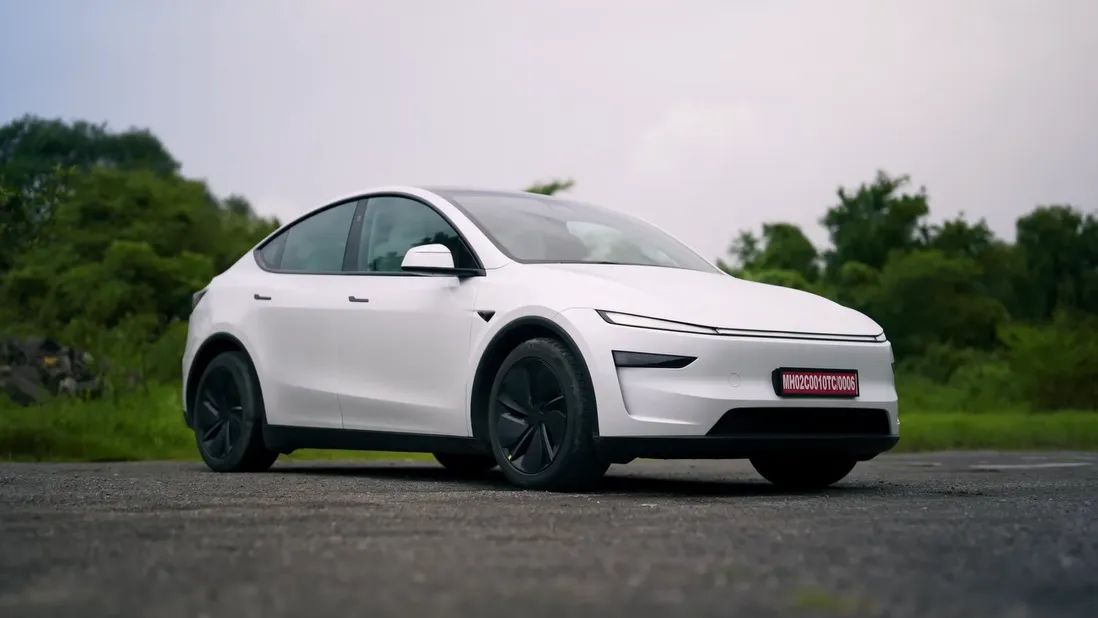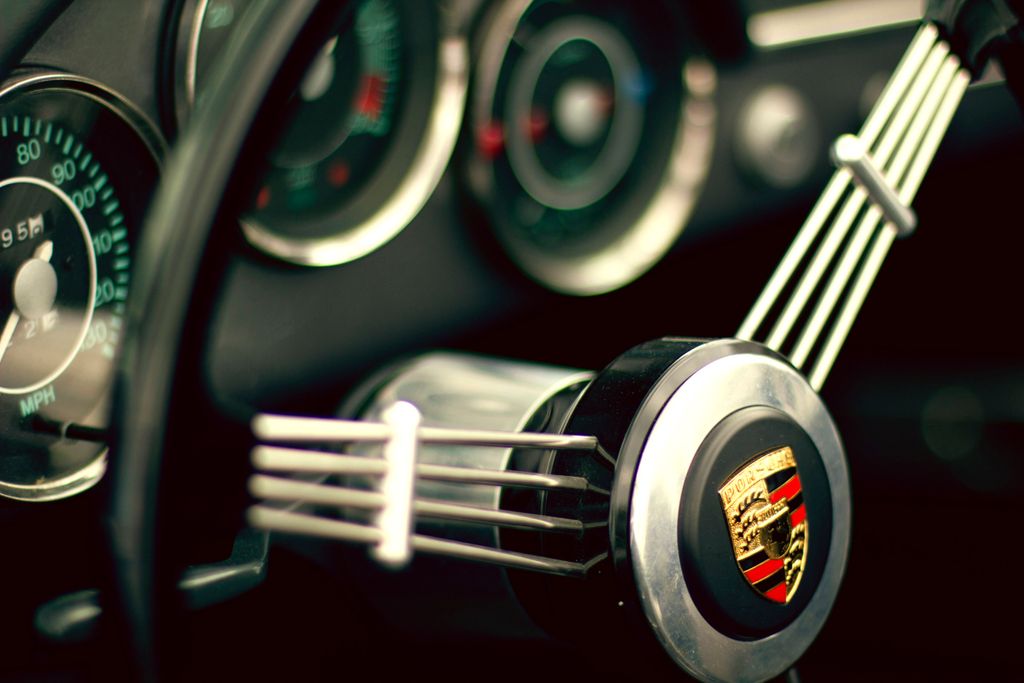
The allure of high-performance automobiles, especially those bearing the crest of Porsche, holds a unique fascination for enthusiasts worldwide. Yet, for the crème de la crème of Hollywood and the ultra-wealthy, ownership transcends mere possession; it evolves into a deeply personal curatorial endeavor, often shrouded in a veil of secrecy. These discerning collectors seek not just cars, but automotive artistry, meticulously preserving and often enhancing vehicles that represent pinnacles of engineering and design.
While names like Jay Leno and Jerry Seinfeld are synonymous with expansive, multi-million dollar car collections, openly showcasing their prized assets, there exists a more discreet echelon of connoisseurs. These individuals, often intertwined with the worlds of entertainment and high culture, cultivate their garages with a profound passion, transforming them into veritable sanctuaries of automotive heritage. They understand that true luxury lies not just in the vehicle’s value, but in its provenance, its story, and the unparalleled driving experience it offers.
Among these esteemed ranks is Magnus Walker, an individual whose journey from fashion icon to celebrated Porsche ‘builder, driver, collector’ is as compelling as the cars he meticulously curates. Known for his distinctive beard and his ‘Urban Outlaw’ philosophy, Walker has etched his name into automotive folklore, particularly for his bespoke Porsche creations. Having designed clothes worn by numerous Hollywood rock stars, his connection to the legendary status of his collection is undeniable, offering a rare glimpse into the highly sought-after Porsches that define his distinctive vision.

1. **The 1980 924 Carrera GT: A Rare Street-Legal Racer**Our journey begins with a true rarity in Magnus Walker’s collection: the 1980 924 Carrera GT. This particular model holds a significant place in Porsche’s history, representing an evolution of the marque’s commitment to blending performance with everyday usability. Porsche, in its pursuit of automotive excellence, produced only 406 examples of this coveted model for the entire world, making it a highly exclusive acquisition even before it entered Walker’s discerning hands. Its presence in his garage speaks volumes about his appreciation for limited-production, historically significant vehicles.
Derived directly from the 1980 924 Turbo, the Carrera GT was a more potent and focused iteration, designed to bridge the gap between road cars and genuine racing machines. While sharing the foundational architecture with its Turbo sibling, Porsche engineers implemented crucial enhancements that elevated its performance profile. This included a re-tuned motor, meticulously refined with different camshafts, which significantly boosted its power output and driving dynamics.
The result of these engineering efforts was a car capable of delivering approximately 210 horsepower, a considerable leap from the 924 Turbo’s 160 horsepower. This power differential translated into a more exhilarating driving experience, characterized by sharper acceleration and a more responsive throttle. For those familiar with Porsche’s racing pedigree, the 924 Carrera GT is recognized as the street version of the venerable Le Mans-winning 924 GTS or GTR, underlining its direct lineage to motorsport glory. It is a testament to Porsche’s ability to infuse racing DNA into a road-legal package.
Car Model Information: 2025 Honda Civic Sport
Name: Porsche 924
Designer: Harm Lagaay
Manufacturer: Porsche
Production: 1976–1988
Assembly: Neckarsulm,Stuttgart
Class: Sports car
Layout: Front-engine, rear-wheel-drive layout
BodyStyle: 2+2 (car body style),coupé
Engine: List of discontinued Volkswagen Group petrol engines#EA831,Turbocharger,2.5 L M44/40 I4
Transmission: Magna PT
Length: 4200 mm
Abbr: on
Wheelbase: 2400 mm
Width: 1685 mm
Height: 1270 mm
Weight: 1242 kg
Predecessor: Porsche 914
Successor: Porsche 944
Categories: 1980s cars, 2+2 coupés, All articles needing additional references, Articles needing additional references from September 2024, Articles with short description
Summary: The Porsche 924 is a sports car produced by Porsche in Neckarsulm, Germany, from 1976 until 1988. A two-door, 2+2 coupé, the 924 replaced the 912E and 914 as the company’s entry-level model.
Although the 928 was designed first, the 924 was the first production road-going Porsche to use water cooling and a front-engine, rear-wheel-drive layout. It was also the first Porsche to be offered with a conventional fully automatic transmission. Like the 914, the 924 began as a joint venture with Volkswagen (VW). Although VW canceled plans to sell a version under its own nameplate, opting to market the independently-developed Scirocco instead, the 924 was assembled in a VW-operated plant and initially used a VW engine.
The 924 made its public debut in November 1975 and a turbocharged version was introduced in 1978. In response to increasing competition, Porsche introduced an upgraded version with a new Porsche-built engine as the 944, which replaced the 924 in the U.S. in 1983. In 1985, VW discontinued the engine used in the 924, prompting Porsche to use a slightly detuned 944 engine instead, drop the Turbo model, rename the vehicle as the 924S, and reintroduce it in the U.S. The 924 was a sales success, with just over 150,000 produced.
Get more information about: Porsche 924
Buying a high-performing used car >>>
Brand: Porsche Model: 924 Carrera GT
Price: $26,923 Mileage: 1,460 mi.
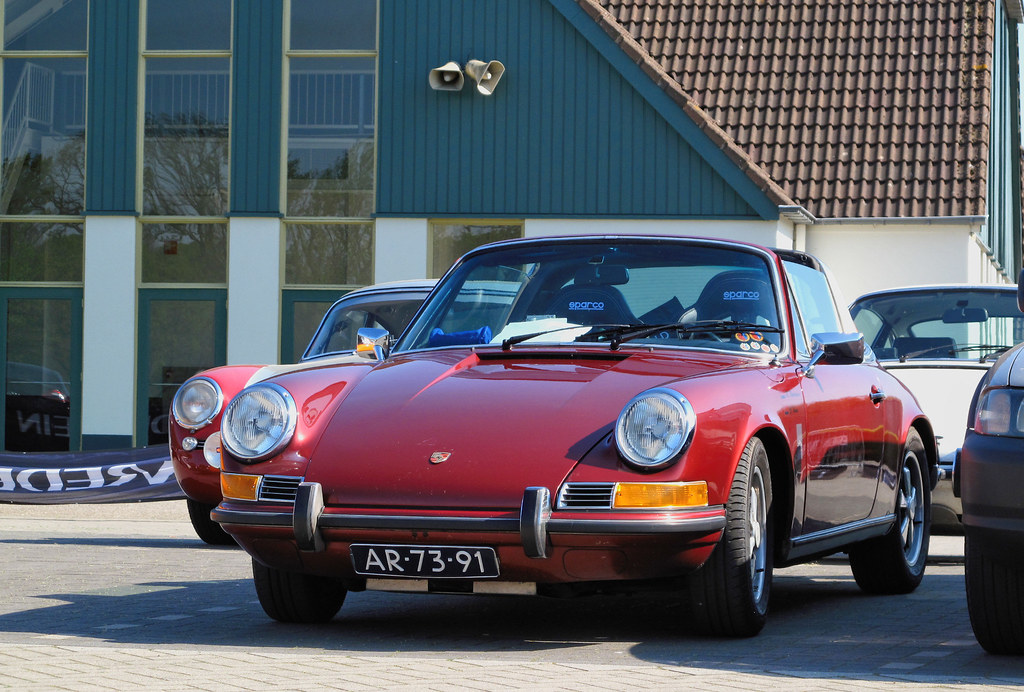
2. **”277″: The Iconic 1971 911 T, Transformed**Standing proudly in Magnus Walker’s collection is a car affectionately known as “277.” This vehicle, a 1971 911 T, holds a deeply personal narrative, embodying Walker’s philosophy of building, driving, and collecting. While the number itself may not immediately convey its significance, the car’s story and its profound connection to Walker elevate it to an iconic status within the Porsche community. It began its life as a “T,” denoting the base model of production during that era, a humble starting point for what would become a legend.
Walker’s ownership of “277” spans an impressive 21 years, a testament to his enduring bond with this particular machine. Over two decades, this 911 T has been far more than a static showpiece; it has been a faithful companion on the track, where Walker has actively participated in club racing since 2002. Its racing resume includes renowned circuits such as Willows Springs, Laguna Seca, Thunder Hill, and California Speedway, where it has consistently proven its mettle and Walker’s driving prowess.
Through years of meticulous care, strategic modifications, and countless hours on the track, “277” has evolved into a highly recognizable and celebrated vehicle. It has become “the car I’m most associated with,” a reflection of Walker’s public image and his distinctive style. More profoundly, it’s the car he feels “most comfortable with,” a machine that “fits me like my favorite pair of shoes or jeans” – a rare and cherished level of synergy between man and machine that defines the true spirit of an enthusiast.
Car Model Information: 2025 Honda Civic Sport
Name: Porsche 911
Caption: The 1 millionth 911 produced on display at Volkswagen Group Forum, Berlin
Designer: Ferdinand Alexander Porsche
Manufacturer: Porsche
Production: September 1964 – present
Assembly: Stuttgart,Baden-Württemberg
Class: Sports car
BodyStyle: unbulleted list
Related: unbulleted list
Layout: Rear-engine design,rear-wheel drive
Predecessor: Porsche 356
Categories: 1970s cars, 1980s cars, 1990s cars, 2+2 coupés, 2000s cars
Summary: The Porsche 911 model series (pronounced Nine Eleven or in German: Neunelf) is a family of German two-door, high performance rear-engine sports cars, introduced in September 1964 by Porsche AG of Stuttgart, Germany, and now in its eighth generation. All 911s have a rear-mounted flat-six engine, and usually 2+2 seating, except for special 2-seater variants. Originally, 911s had air-cooled engines, and torsion bar suspension, but the 911 has been continuously enhanced, and evolved across generations. Though the 911 core concept has remained largely unchanged, water-cooled engines were introduced with the 996 series in 1998, and front and rear suspension have been replaced by Porsche-specific MacPherson suspension up front, and independent multi-link rear suspension.
The 911 has been raced extensively by private and factory teams, in a variety of classes. It is among the most successful competition cars. In the mid-1970s, the naturally aspirated 911 Carrera RSR won world championship races including Targa Florio and the 24 Hours of Daytona. The 911-derived 935 turbo also won the 24 Hours of Le Mans in 1979. Porsche won the World Championship for Makes in 1976, 1977, 1978, and 1979 with 911-derived models.
In a 1999 poll to determine the Car of the Century, the 911 ranked fifth — one of two in the top five that had remained continuously in production (the original Beetle remained in production until 2003). The one millionth example was manufactured in May 2017 and is in the company’s permanent collection.
Get more information about: Porsche 911
Buying a high-performing used car >>>
Brand: Porsche Model: 911 T
Price: $26,923 Mileage: 1,460 mi.
Read more about: Steer Clear: 14 Vehicles Notorious for Early Breakdowns Before 50,000 Miles
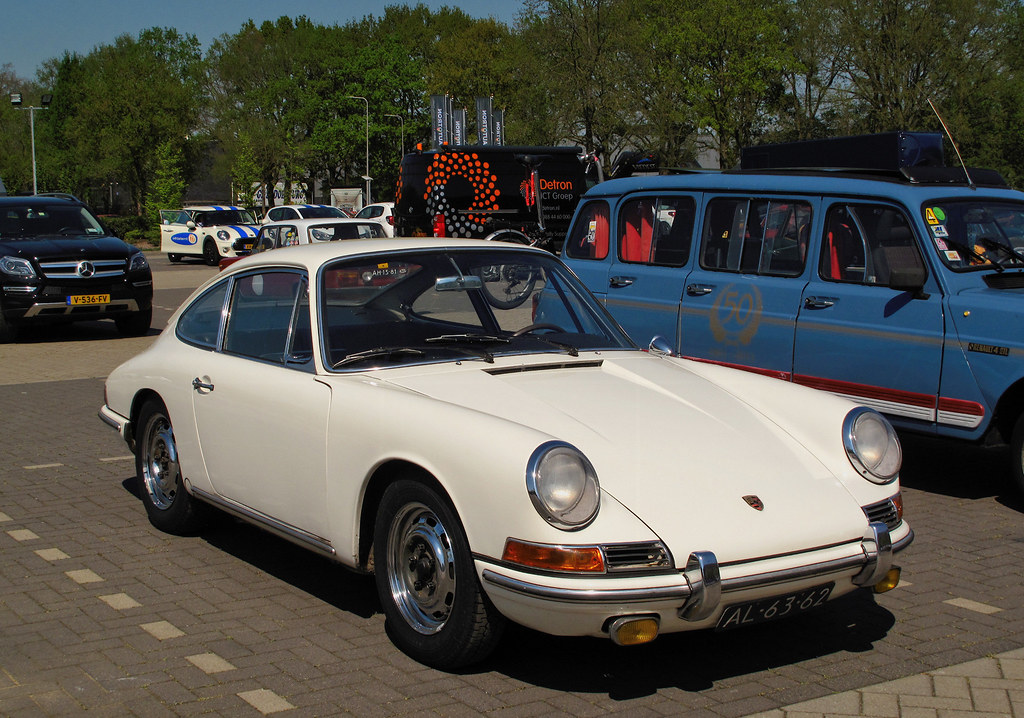
3. **The Pristine 1966 911: A Journey Back in Time**Among the diverse array of Porsches housed in Magnus Walker’s downtown LA Arts District warehouse, the 1966 911 stands out as a remarkable example of preservation and authenticity. This particular car is cherished for its “bone stock original” condition, a rare feat for a vehicle of its vintage. Apart from a single repaint in its original Irish Green color, it remains true to its factory specifications, offering a genuine glimpse into Porsche’s early production era and its foundational design principles.
Driving the 1966 911 is, for Walker, akin to a profound temporal displacement. He describes the experience as feeling “like I’ve gone back in time 54 years to 1966,” a testament to the car’s unfiltered and raw mechanical nature. Unlike modern vehicles that often insulate the driver from the road, this classic 911 delivers a deeply visceral and engaging connection. The sensations are immediate and intense, creating an unforgettable interaction with the machine and the environment.
Walker vividly articulates this sensation: “80 to 100 mph feels really really fast in that car. It’s moving around. It’s making a lot of noise. You’re connected to it, it’s the visceral feeling.” He further contrasts this with contemporary automotive experiences, noting that “100 in this car feels like you’re doing 150. 150 in a new car feels like you’re doing 100 because you’re so disconnected.” This profound tactile feedback and raw mechanical symphony are precisely what makes this 1966 911 a cherished icon for purists and a poignant reminder of Porsche’s enduring legacy of driver engagement.
Car Model Information: 2007 Porsche 911 Turbo
Name: Porsche 911
Caption: The 1 millionth 911 produced on display at Volkswagen Group Forum, Berlin
Designer: Ferdinand Alexander Porsche
Manufacturer: Porsche
Production: September 1964 – present
Assembly: Stuttgart,Baden-Württemberg
Class: Sports car
BodyStyle: unbulleted list
Related: unbulleted list
Layout: Rear-engine design,rear-wheel drive
Predecessor: Porsche 356
Categories: 1970s cars, 1980s cars, 1990s cars, 2+2 coupés, 2000s cars
Summary: The Porsche 911 model series (pronounced Nine Eleven or in German: Neunelf) is a family of German two-door, high performance rear-engine sports cars, introduced in September 1964 by Porsche AG of Stuttgart, Germany, and now in its eighth generation. All 911s have a rear-mounted flat-six engine, and usually 2+2 seating, except for special 2-seater variants. Originally, 911s had air-cooled engines, and torsion bar suspension, but the 911 has been continuously enhanced, and evolved across generations. Though the 911 core concept has remained largely unchanged, water-cooled engines were introduced with the 996 series in 1998, and front and rear suspension have been replaced by Porsche-specific MacPherson suspension up front, and independent multi-link rear suspension.
The 911 has been raced extensively by private and factory teams, in a variety of classes. It is among the most successful competition cars. In the mid-1970s, the naturally aspirated 911 Carrera RSR won world championship races including Targa Florio and the 24 Hours of Daytona. The 911-derived 935 turbo also won the 24 Hours of Le Mans in 1979. Porsche won the World Championship for Makes in 1976, 1977, 1978, and 1979 with 911-derived models.
In a 1999 poll to determine the Car of the Century, the 911 ranked fifth — one of two in the top five that had remained continuously in production (the original Beetle remained in production until 2003). The one millionth example was manufactured in May 2017 and is in the company’s permanent collection.
Get more information about: Porsche 911
Buying a high-performing used car >>>
Brand: Porsche Model: 911
Price: $84,991 Mileage: 88,148 mi.
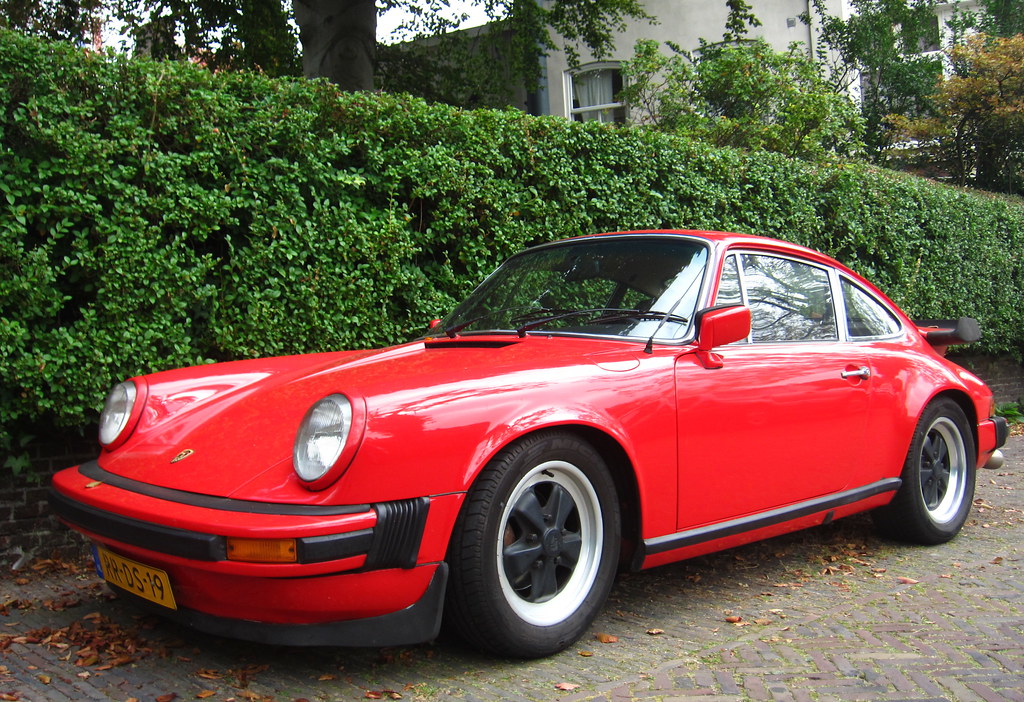
4. **The 1978 SC / “HR”: The Spirit of the Budget Hot Rod**Venturing deeper into Magnus Walker’s eclectic collection, we encounter a vehicle he affectionately refers to as the 1978 SC / “HR,” with “HR” signifying ‘hot rod.’ This particular Porsche holds a special place in his heart, representing a different facet of his automotive philosophy – one that champions accessibility and the joy of hands-on customization. Acquired almost a decade ago, this car was not initially a pristine example, but rather a canvas for Walker’s creative and pragmatic vision.
Originally a track car, the 1978 SC underwent a thoughtful transformation under Walker’s guidance, evolving into what he describes as a “street track car.” This conversion aimed to blend the exhilarating performance characteristics suited for the circuit with the practicalities and comforts required for enjoyable road use. It’s a testament to his belief that performance and passion shouldn’t be confined solely to closed courses, but can be savored on public roads, albeit with a responsible approach.
What truly sets this “HR” apart, and what makes it relatable to a broader audience of enthusiasts, is its provenance as a “budget build.” Walker proudly describes it as the “do-it-yourself punk rock version of creating a fun car for the street without breaking the bank.” This ethos resonates deeply within the car community, demonstrating that exceptional automotive experiences and personalized creations are not solely the domain of unlimited budgets. It champions ingenuity, resourcefulness, and the pure, unadulterated joy of building and driving a car that truly reflects one’s individual spirit.
Car Model Information: 1980 Porsche 911 SC
Name: Porsche 911
Caption: The 1 millionth 911 produced on display at Volkswagen Group Forum, Berlin
Designer: Ferdinand Alexander Porsche
Manufacturer: Porsche
Production: September 1964 – present
Assembly: Stuttgart,Baden-Württemberg
Class: Sports car
BodyStyle: unbulleted list
Related: unbulleted list
Layout: Rear-engine design,rear-wheel drive
Predecessor: Porsche 356
Categories: 1970s cars, 1980s cars, 1990s cars, 2+2 coupés, 2000s cars
Summary: The Porsche 911 model series (pronounced Nine Eleven or in German: Neunelf) is a family of German two-door, high performance rear-engine sports cars, introduced in September 1964 by Porsche AG of Stuttgart, Germany, and now in its eighth generation. All 911s have a rear-mounted flat-six engine, and usually 2+2 seating, except for special 2-seater variants. Originally, 911s had air-cooled engines, and torsion bar suspension, but the 911 has been continuously enhanced, and evolved across generations. Though the 911 core concept has remained largely unchanged, water-cooled engines were introduced with the 996 series in 1998, and front and rear suspension have been replaced by Porsche-specific MacPherson suspension up front, and independent multi-link rear suspension.
The 911 has been raced extensively by private and factory teams, in a variety of classes. It is among the most successful competition cars. In the mid-1970s, the naturally aspirated 911 Carrera RSR won world championship races including Targa Florio and the 24 Hours of Daytona. The 911-derived 935 turbo also won the 24 Hours of Le Mans in 1979. Porsche won the World Championship for Makes in 1976, 1977, 1978, and 1979 with 911-derived models.
In a 1999 poll to determine the Car of the Century, the 911 ranked fifth — one of two in the top five that had remained continuously in production (the original Beetle remained in production until 2003). The one millionth example was manufactured in May 2017 and is in the company’s permanent collection.
Get more information about: Porsche 911
Buying a high-performing used car >>>
Brand: Porsche Model: SC
Price: $64,999 Mileage: 23,914 mi.
Read more about: Hollywood’s Unforgettable Swan Songs: 15 Stars Whose Final Films Shined Brightest
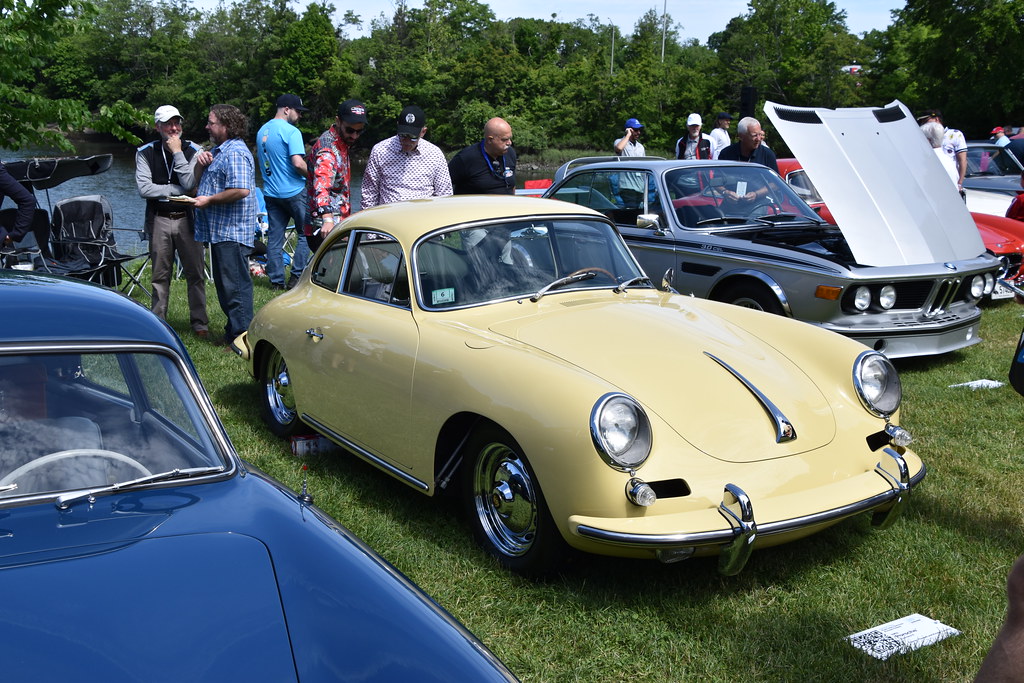
5. **”310″: The Early 911 with Legendary Brumos Pedigree**Among the numerous extraordinary Porsches in Magnus Walker’s collection, one stands as a profound historical artifact: car number “310.” This isn’t just any early 911; it is, in fact, the 310th 911 ever built, placing it among the foundational examples of Porsche’s most iconic model. Its incredibly low production number signifies its role in the very nascent stages of the 911’s storied lineage, offering a tangible connection to the origins of a global automotive phenomenon that has captivated generations of enthusiasts.
Adding another layer of unparalleled distinction, this particular 911 has a rich connection to the legendary Brumos dealership in Jacksonville, Florida. Brumos is a name that resonates deeply within Porsche circles, synonymous with racing excellence and a storied history. Car “310” was, remarkably, one of the first half dozen 911s ever sold by this esteemed dealership, further cementing its historical significance and placing it in an exclusive echelon of early production models with verifiable provenance.
The Brumos connection extends beyond mere sales history; it links “310” to some of the most revered figures in Porsche racing. The dealership was famously home to racing icons Peter Gregg and Hurley Haywood, who served as its number one and number two drivers. Hurley Haywood’s name, in particular, is etched into the annals of motorsport, with an astonishing five victories at Daytona and multiple wins at Le Mans. His career defines him as a true “Porsche racing icon and legend.” To own a car with such deep roots in a dealership connected to these titans of racing not only enhances its value but imbues “310” with an almost mythical aura, making it a cornerstone of any truly discerning Porsche collection.
Car Model Information: 2024 Porsche 911 Turbo
Name: Porsche 911
Caption: The 1 millionth 911 produced on display at Volkswagen Group Forum, Berlin
Designer: Ferdinand Alexander Porsche
Manufacturer: Porsche
Production: September 1964 – present
Assembly: Stuttgart,Baden-Württemberg
Class: Sports car
BodyStyle: unbulleted list
Related: unbulleted list
Layout: Rear-engine design,rear-wheel drive
Predecessor: Porsche 356
Categories: 1970s cars, 1980s cars, 1990s cars, 2+2 coupés, 2000s cars
Summary: The Porsche 911 model series (pronounced Nine Eleven or in German: Neunelf) is a family of German two-door, high performance rear-engine sports cars, introduced in September 1964 by Porsche AG of Stuttgart, Germany, and now in its eighth generation. All 911s have a rear-mounted flat-six engine, and usually 2+2 seating, except for special 2-seater variants. Originally, 911s had air-cooled engines, and torsion bar suspension, but the 911 has been continuously enhanced, and evolved across generations. Though the 911 core concept has remained largely unchanged, water-cooled engines were introduced with the 996 series in 1998, and front and rear suspension have been replaced by Porsche-specific MacPherson suspension up front, and independent multi-link rear suspension.
The 911 has been raced extensively by private and factory teams, in a variety of classes. It is among the most successful competition cars. In the mid-1970s, the naturally aspirated 911 Carrera RSR won world championship races including Targa Florio and the 24 Hours of Daytona. The 911-derived 935 turbo also won the 24 Hours of Le Mans in 1979. Porsche won the World Championship for Makes in 1976, 1977, 1978, and 1979 with 911-derived models.
In a 1999 poll to determine the Car of the Century, the 911 ranked fifth — one of two in the top five that had remained continuously in production (the original Beetle remained in production until 2003). The one millionth example was manufactured in May 2017 and is in the company’s permanent collection.
Get more information about: Porsche 911
Buying a high-performing used car >>>
Brand: Porsche Model: 911
Price: $274,975 Mileage: 1,524 mi.
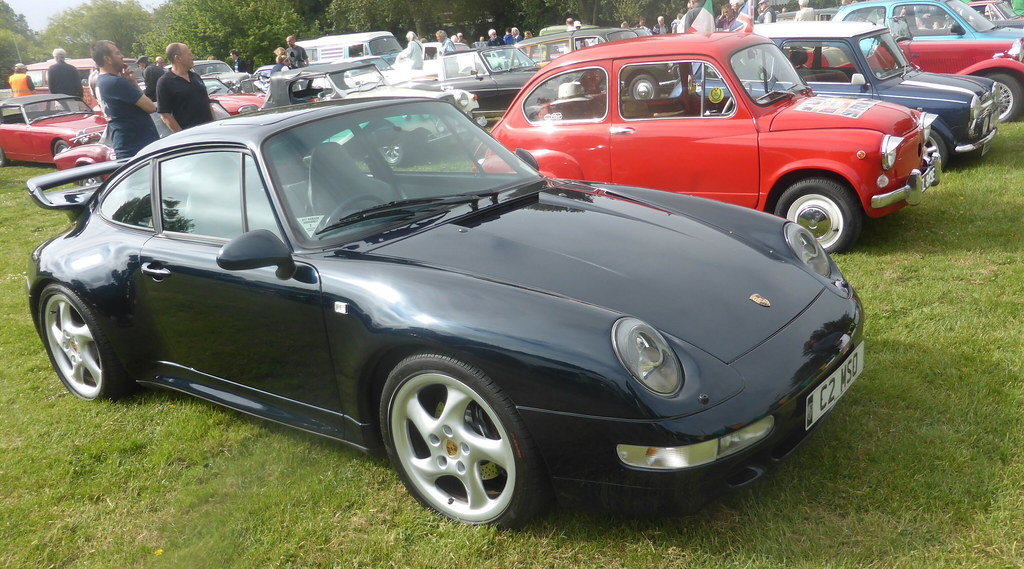
6. **The 1967 911 S: A ‘Holy Grail’ of Early 911s**Our exclusive journey into Magnus Walker’s revered garage continues, bringing us face-to-face with a true jewel from Porsche’s illustrious past: the 1967 911 S. This particular model holds a foundational position in the annals of the marque, representing an early and crucial evolution of the iconic 911. The original 911 debuted in 1964 with a 2-liter motor, producing approximately 140 horsepower, establishing itself as a benchmark for sports car design. By 1967, Porsche was ready to elevate its capabilities to new heights with the more potent “S” variant.
Magnus Walker, with his unparalleled appreciation for Porsche’s deep heritage, reveals a profound personal connection to this model, stating candidly, “At one time I owned five ’67 S cars.” This impressive testament speaks volumes about the enduring allure and historical importance of the 911 S in his discerning eyes. To collect and cherish multiple examples of such a specific, early variant highlights his deep understanding of its significance and his commitment to preserving pivotal moments in Porsche’s history.
The status of the 1967 911 S as a highly sought-after collectible is further underscored by its remarkable appreciation in value. Walker notes with a knowing smile that these cars are “now worth about ten times what I paid for them,” a reflection of their increasing rarity and desirability among discerning collectors globally. This exponential growth in value, coupled with its pivotal role in the 911’s development, firmly cements its reputation as a “holy grail car” within the elite enthusiast community, representing both a sound investment and a peerless driving machine.
Car Model Information: 2007 Porsche 911 Turbo
Name: Porsche 911
Caption: The 1 millionth 911 produced on display at Volkswagen Group Forum, Berlin
Designer: Ferdinand Alexander Porsche
Manufacturer: Porsche
Production: September 1964 – present
Assembly: Stuttgart,Baden-Württemberg
Class: Sports car
BodyStyle: unbulleted list
Related: unbulleted list
Layout: Rear-engine design,rear-wheel drive
Predecessor: Porsche 356
Categories: 1970s cars, 1980s cars, 1990s cars, 2+2 coupés, 2000s cars
Summary: The Porsche 911 model series (pronounced Nine Eleven or in German: Neunelf) is a family of German two-door, high performance rear-engine sports cars, introduced in September 1964 by Porsche AG of Stuttgart, Germany, and now in its eighth generation. All 911s have a rear-mounted flat-six engine, and usually 2+2 seating, except for special 2-seater variants. Originally, 911s had air-cooled engines, and torsion bar suspension, but the 911 has been continuously enhanced, and evolved across generations. Though the 911 core concept has remained largely unchanged, water-cooled engines were introduced with the 996 series in 1998, and front and rear suspension have been replaced by Porsche-specific MacPherson suspension up front, and independent multi-link rear suspension.
The 911 has been raced extensively by private and factory teams, in a variety of classes. It is among the most successful competition cars. In the mid-1970s, the naturally aspirated 911 Carrera RSR won world championship races including Targa Florio and the 24 Hours of Daytona. The 911-derived 935 turbo also won the 24 Hours of Le Mans in 1979. Porsche won the World Championship for Makes in 1976, 1977, 1978, and 1979 with 911-derived models.
In a 1999 poll to determine the Car of the Century, the 911 ranked fifth — one of two in the top five that had remained continuously in production (the original Beetle remained in production until 2003). The one millionth example was manufactured in May 2017 and is in the company’s permanent collection.
Get more information about: Porsche 911
Buying a high-performing used car >>>
Brand: Porsche Model: 911
Price: $84,991 Mileage: 88,148 mi.
Read more about: Commanding Attention: 13 Most Expensive 1970s Cars That Are Worth a Fortune Today for Enthusiasts and Collectors
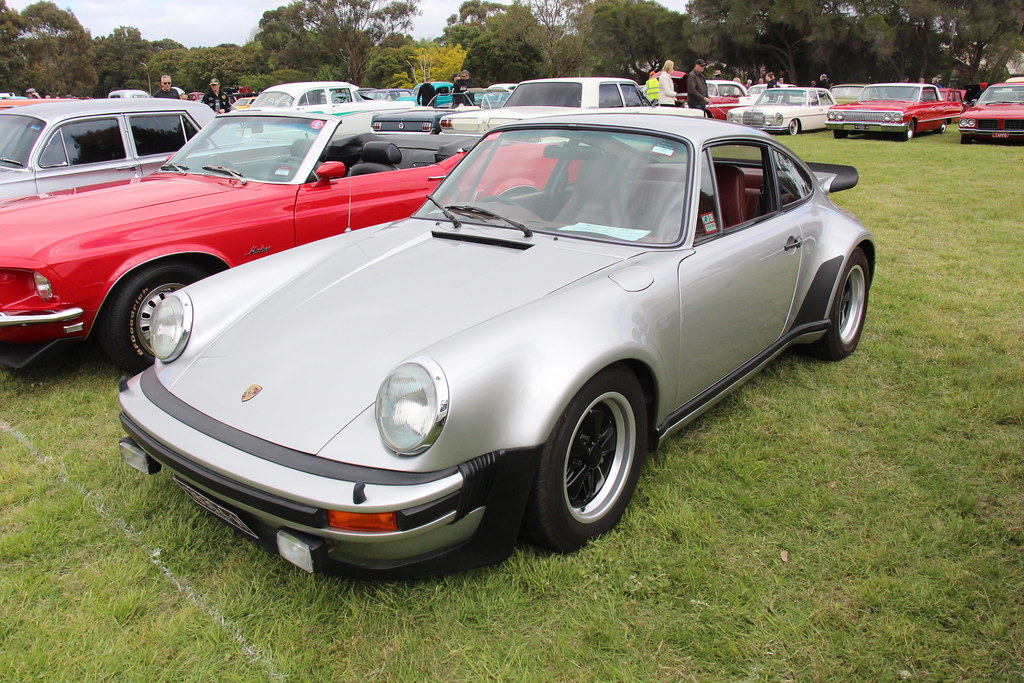
7. **The Early 3.0-Liter Turbos: Pioneering Forced Induction**Our next stop in Magnus Walker’s curated collection brings us to a seminal moment in Porsche’s history: the birth of the Turbo era, represented by his magnificent trio of 1975, 1976, and 1977 3.0-liter Turbos. These machines are not just cars; they are technological breakthroughs that fundamentally altered the landscape of performance automobiles, ushering in an age of unprecedented speed and power through forced induction. The introduction of the Turbo was a revolutionary step that cemented Porsche’s reputation for daring innovation and engineering prowess.
The initial rollout of the 3.0-liter Turbo was characterized by extreme exclusivity, making each example an instant legend. In its inaugural year, 1975, Porsche meticulously produced a mere 275 samples for the entire world, a testament to its groundbreaking status and the bespoke craftsmanship involved in its creation. Each of these early Turbos was a hand-built marvel, designed to showcase the pinnacle of the marque’s capabilities. This limited production volume immediately elevated them to the status of ultimate collector’s items, coveted by enthusiasts globally for their rarity and significance.
Among these incredibly scarce vehicles, Walker highlights a particularly striking copper brown metallic specimen, revealing an astonishing detail: “Only 32 of them like this copper brown metallic one are right-hand-drive.” This fact underscores the almost unimaginable scarcity of certain configurations within an already ultra-exclusive production run, demonstrating Walker’s discerning eye for singular historical examples. His ability to acquire such unique pieces speaks volumes about his network and his dedication to finding the most distinctive Porsches available.
Perhaps the most historically significant vehicle among these early Turbos is one Magnus proudly identifies as “the first U.S. production Turbo, documented by the museum to be the first Turbo sold in America.” This particular car carries an unparalleled distinction, marking the true beginning of the Turbo’s legacy in a crucial market. While the rest of the world received the groundbreaking Turbo in 1975, its arrival on American shores was delayed until 1976, navigating stringent safety and emissions regulations. This delay only amplified the anticipation, making this specific car a pivotal piece of transatlantic automotive history.
Car Model Information: 2008 Porsche 911 Turbo
Name: Porsche 930
Manufacturer: Porsche
Aka: Porsche 911 Turbo
Production: 1975–1977 (3.0-litre),2,819 produced,1978–1989 (3.3-litre),18,770 produced
Assembly: Stuttgart,Zuffenhausen
Predecessor: Porsche 911 (classic)#Carrera RS & RSR (1973 and 1974)
Successor: Porsche 964#Turbo
Class: Sports car
BodyStyle: 2+2 (car body style),2+2 (car body style),Targa top
Layout: Rear-engine, rear-wheel-drive layout
Platform: Porsche G-series
Engine: ubl
Transmission: Manual transmission
Wheelbase: cvt
Length: cvt
Width: cvt
Height: cvt
Weight: cvt
Related: Porsche 911 (classic),Porsche 934,Porsche 935,Porsche 959,Porsche 961
Caption: 1976 Porsche 930 Turbo (US)
Categories: 1980s cars, All articles with unsourced statements, Articles with short description, Articles with unsourced statements from April 2019, Articles with unsourced statements from September 2022
Summary: The Porsche 930 is a turbocharged variant of the 911 model sports car manufactured by German automobile manufacturer Porsche between 1975 and 1989. It was the maker’s top-of-the-range 911 model for its entire production duration and, at the time of its introduction, was the fastest production car in Germany.
Get more information about: Porsche 911 (930)
Buying a high-performing used car >>>
Brand: Porsche Model: Turbo
Price: $86,990 Mileage: 54,652 mi.
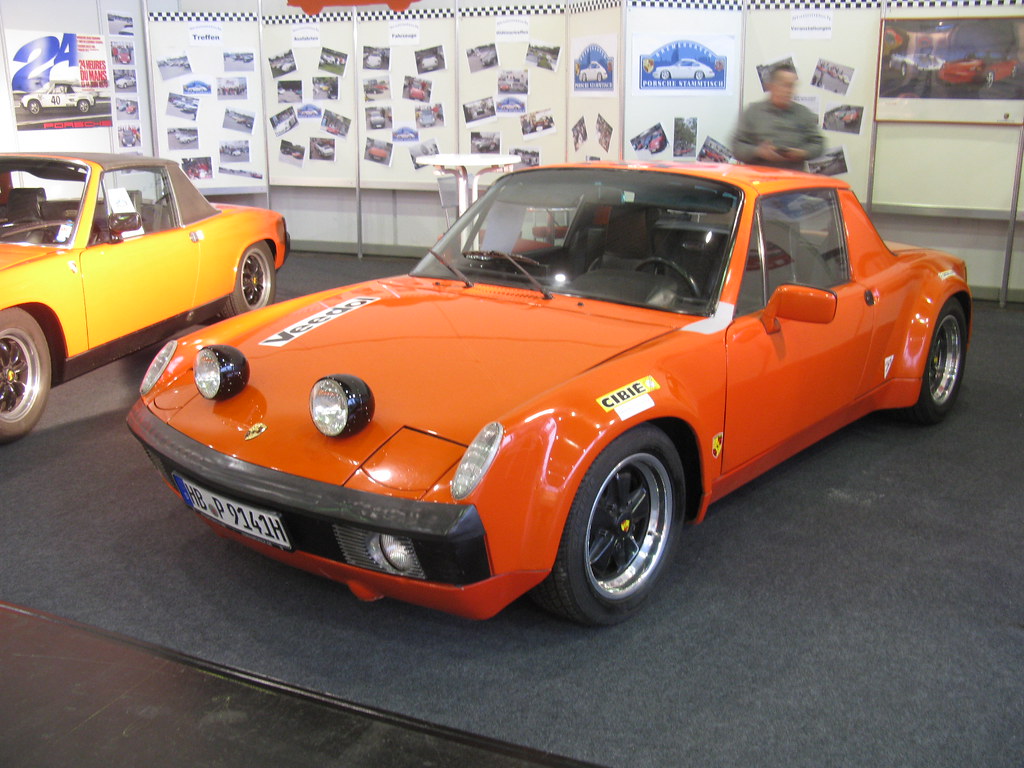
8. **The Porsche 914 SEMA Project: A Rattle Can Masterpiece**Venturing beyond the hallowed lineage of the 911, Magnus Walker’s eclectic collection also celebrates diverse facets of Porsche’s engineering prowess, brilliantly exemplified by his vibrant Porsche 914. Described by Walker as “a great example of Porsche’s mid-engine cars,” this particular 914 stands as a testament to audacious creative vision and the vibrant spirit of hands-on customization, a stark contrast to pristine restorations. It truly embodies Walker’s ‘Urban Outlaw’ ethos with playful defiance.
This isn’t just any 914; it’s a car imbued with a truly captivating backstory, ingeniously transformed into a showpiece for the prestigious SEMA trade show in Las Vegas, one of the automotive world’s most significant events. What makes its presentation on such a grand stage remarkable is the unconventional method of its preparation. Walker humorously recalls the swift genesis of its new aesthetic: “The interesting thing about this car is that it was literally sort of cosmetically made over in three days, by myself and Felix Holst, the guy I bought the car from.”
The duo’s audacious “rattle can” aesthetic, while perhaps initially shocking to purists, powerfully underscores a vital aspect of Walker’s “Urban Outlaw” philosophy. It champions the belief that raw passion, uninhibited personal expression, and genuine enthusiasm can, and often should, supersede the confines of conventional luxury and exorbitant budgets. This approach resonates deeply with a broader community of enthusiasts, proving that extraordinary automotive experiences are not solely the domain of unlimited financial resources.
With characteristic flair, Walker and Holst “essentially just sprayed it up with rattle cans and took it to the country’s biggest auto show and displayed it with Mobile One.” This bold, almost punk rock approach, highlights profound ingenuity, resourceful determination, and an unadulterated joy for car culture. It serves as a compelling demonstration that a captivating narrative and a truly unique style can capture attention and inspire awe just as effectively as meticulous, high-dollar craftsmanship. The 914 SEMA project is a vibrant symbol of creativity unbounded by convention.
Car Model Information: 1970 Porsche 914 914/6
Name: Porsche 914
Caption: 1970 Porsche 914
Manufacturer: Porsche,Karmann
Aka: VW-Porsche 914
Production: 1969–1976,118,978 produced,914/4: 115,646,914/6: 3,332,914/8: 2
Assembly: Stuttgart,Osnabrück
Predecessor: Porsche 912,Volkswagen Karmann Ghia#Type 34 Karmann Ghia
Successor: Porsche 924
Class: Sports car
BodyStyle: Targa top
Layout: Rear mid-engine, rear-wheel-drive layout
Engine: Volkswagen air-cooled engine#Type 4: 1.7–2.0 litres,Volkswagen air-cooled engine#Type 4: 1.7–2.0 litres,Volkswagen air-cooled engine#Type 4: 1.7–2.0 litres,Porsche flat-six engine
Wheelbase: cvt
Length: cvt
Width: cvt
Height: cvt
Weight: cvt
Related: Porsche 914-6 GT,Porsche Tapiro
Designer: Ferdinand Alexander Porsche
Categories: 1970s cars, 24 Hours of Le Mans race cars, All articles needing additional references, All articles with incomplete citations, All articles with unsourced statements
Summary: The Porsche 914 or VW-Porsche 914 is a mid-engined sports car designed, manufactured and marketed collaboratively by Volkswagen and Porsche from 1969 until 1976. It was available only as a targa-topped two-seat roadster powered by either a flat-4 or flat-six engine.
Get more information about: Porsche 914
Buying a high-performing used car >>>
Brand: Porsche Model: 914
Price: Not Priced Mileage: 52,111 mi.
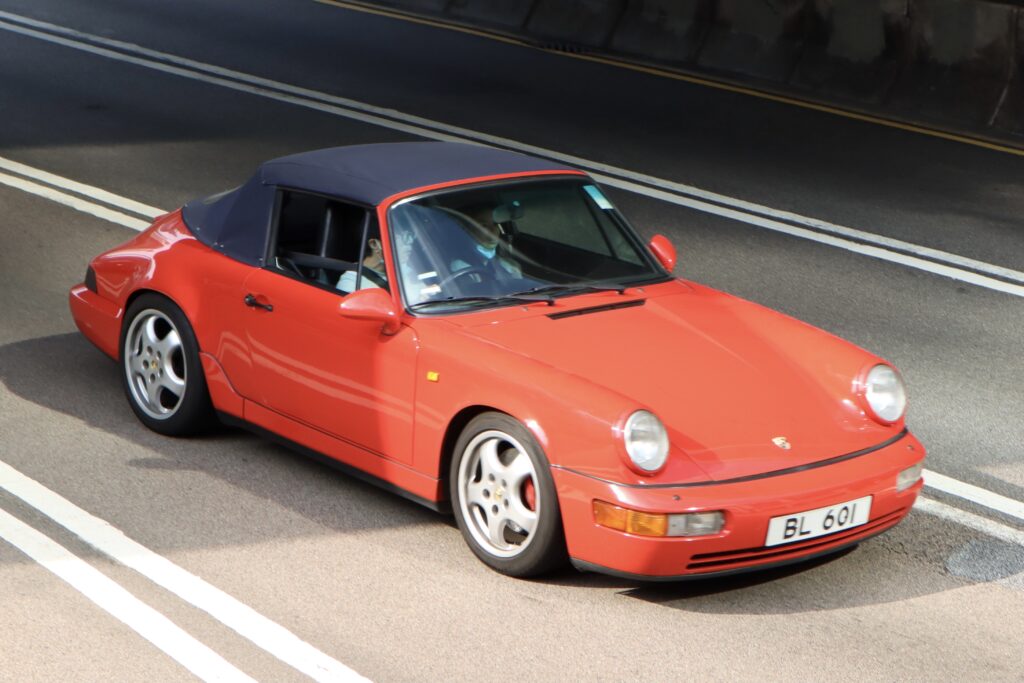
9. **The 1990 964: Walker’s Pinnacle Performance Build**Culminating our exploration of Magnus Walker’s unparalleled Porsche collection is his 1990 964, a vehicle he proudly declares as “my most performance-oriented build to date.” This meticulously crafted machine embodies the very essence of his ‘Urban Outlaw’ philosophy, seamlessly blending a nuanced, almost understated aesthetic with an aggressively potent, track-ready powertrain and a suite of bespoke engineering modifications. It is a true masterclass in the delicate balance of subtlety and raw power, expertly designed to reveal its intricate details and formidable capabilities upon closer inspection.
From a casual glance, this 964 might gracefully resemble a classic 911, maintaining the timeless silhouette that defines the marque. However, a discerning eye and closer examination unveil a symphony of unique modifications that speak volumes about Walker’s singular and uncompromising vision. He meticulously explains the profound structural alterations, noting that the “hood is channeled because the roof is channeled,” a complex reshaping that alters the car’s aerodynamic profile. Further distinguishing this build are the “fenders louvered,” a pioneering customization he emphasizes “had never been done” before, with each louver “individually stamped into the fender,” showcasing obsessive attention to handcrafted detail.
The performance enhancements woven into the very fabric of this 964 are equally impressive as its aesthetic refinements, transforming it into a formidable machine ready to conquer any road or track. It boasts an “early Turbo tail,” a nod to Porsche’s racing heritage, further refined with “a sort of gurney flap at the back,” an effective aerodynamic addition. Underneath, the car rides on specially engineered “17-inch version of my Outlaw wheels,” paired with robust “Brembo race brakes,” ensuring both an aggressive stance and unparalleled stopping power, critical for its high-performance aspirations.
The heart of this automotive beast is a truly formidable power unit: a “3.8-liter RS spec motor built on a 1995 993 motor, with approximately 320-horsepower.” This potent engine delivers an exhilarating rush of performance that magnificently belies its somewhat “subdued appearance.” Walker sums up the allure of this extraordinary creation perfectly: “it’s the car that the more you look at it the more details you see. And it’s a blast to drive.” This statement captures the very essence of the ‘Urban Outlaw’ 964 – a vehicle whose true depth and engineering brilliance promise an unmatched and deeply rewarding driving experience.
**The Enduring Spirit of the Urban Outlaw: A Legacy Driven by Passion**
Car Model Information: 1986 Porsche 911 Cabriolet
Name: Porsche 964
Caption: Porsche 911 Turbo 3.3 (964)
Aka: Porsche Carrera
Manufacturer: Porsche
Class: Sports car
Layout: RR layout,R4 layout
Production: 1989–December 1993 , 63,762 built
Related: Ruf RCT
Predecessor: Porsche 911 (classic),Porsche 911 (930)
Successor: Porsche 993
BodyStyle: coupé
Engine: ubl
Wheelbase: 2270 mm
Abbr: on
Length: 4275 mm
Width: convert
Height: convert
Transmission: Tiptronic,Automatic transmission
Assembly: Baden-Württemberg,Stuttgart
Designer: Benjamin Dimson (1985, 1986)
Categories: 1990s cars, All-wheel-drive vehicles, All Wikipedia articles needing clarification, Articles with short description, CS1 maint: archived copy as title
Summary: The Porsche 964 is a model of the Porsche 911 sports car manufactured and sold between 1989 and 1994. Designed by Benjamin Dimson through January 1986, it featured significant styling revisions over previous 911 models, most prominently the more integrated bumpers. It was the first car to be offered with Porsche’s Tiptronic automatic transmission and all-wheel drive as options.
Get more information about: Porsche 911 (964)
Buying a high-performing used car >>>
Brand: Porsche Model: 964
Price: $79,980 Mileage: 23,922 mi.
As our exclusive, in-depth tour through Magnus Walker’s meticulously curated Porsche collection draws to a close, it becomes profoundly clear that this is far more than a mere assembly of rare automobiles. It is a vibrant, living testament to a life defined by unwavering passion, boundless ingenuity, and a deep, visceral connection to the purest driving experience. Each Porsche, from historically significant early models to radically customized performance machines, tells a unique and compelling chapter of his extraordinary journey. They collectively reflect a philosophy championing individuality over conformity, and visceral engagement over disconnected luxury. Walker’s ‘Urban Outlaw’ spirit isn’t just about the magnificent cars; it’s about the rich stories they tell, the roads they’ve travelled, and the untamed dreams they ignite within every enthusiast. It’s a powerful reminder that true automotive artistry lies not merely in what you own, but in how you passionately build, fearlessly drive, and relentlessly pursue the pure joy of the open road. His collection stands as an aspirational beacon, urging us all to embrace our inner outlaw, step on the pedal, and never give up on the dream of the perfect drive. Cheers, and rock on.



